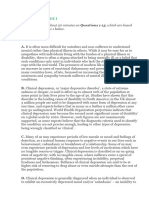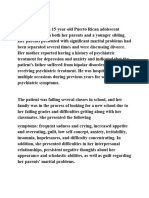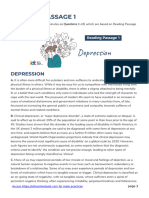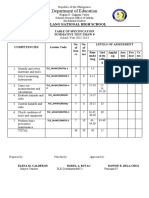0% found this document useful (0 votes)
7 views7 pagesDepression
The article discusses a case of severe depression treated through Transactional Analysis (TA), detailing the therapeutic relationship and phases of treatment. The patient, a 41-year-old man, experienced profound loneliness and feelings of inadequacy, which were exacerbated by a traumatic incident. The author emphasizes the importance of understanding the internal dialogue of depressed clients and the therapeutic process, which included establishing a supportive relationship and focusing on body awareness and self-care.
Uploaded by
Weslin PanakalCopyright
© © All Rights Reserved
We take content rights seriously. If you suspect this is your content, claim it here.
Available Formats
Download as PDF, TXT or read online on Scribd
0% found this document useful (0 votes)
7 views7 pagesDepression
The article discusses a case of severe depression treated through Transactional Analysis (TA), detailing the therapeutic relationship and phases of treatment. The patient, a 41-year-old man, experienced profound loneliness and feelings of inadequacy, which were exacerbated by a traumatic incident. The author emphasizes the importance of understanding the internal dialogue of depressed clients and the therapeutic process, which included establishing a supportive relationship and focusing on body awareness and self-care.
Uploaded by
Weslin PanakalCopyright
© © All Rights Reserved
We take content rights seriously. If you suspect this is your content, claim it here.
Available Formats
Download as PDF, TXT or read online on Scribd
/ 7
























































































